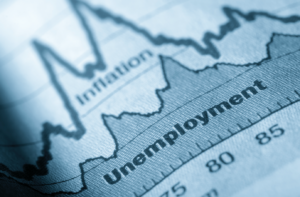Trump Says the vaccine has to be approved by the HiM not the FDA
(Bloomberg) — President Donald Trump signaled that he could overrule any tightening of U.S. rules for the emergency clearance of a coronavirus vaccine, a move that could increase concerns that the race to find a Covid-19 shot is being politicized ahead of the presidential election. The Food and Drug Administration is expected to soon issue final guidelines for an emergency-use authorization. Regulators and drugmakers have in recent weeks vowed to adhere to science, not politics, in deciding when a vaccine is ready to reach the market. At a news conference on Wednesday, Trump said it “sounds like a political move” when asked whether the FDA was considering stricter standards for an authorization, suggesting that the White House could intercede if it thought the agency was too rigorous.“That has to be approved by the White House,” Trump said. “We may or may not approve it.” If a vaccine shows promising early signs of being safe and effective, it could be allowed to reach the market on an emergency basis before full results from a clinical trial are available. Companies including Pfizer Inc., Moderna Inc., AstraZeneca Plc and Johnson & Johnson have vaccine candidates in late-stage clinical trials. Some of those studies could produce efficacy data as soon as October. Trump is trailing Democrat Joe Biden in polls ahead of the November election, with surveys showing that a majority of Americans disapprove of the president’s handling of the virus. Trump has sought to focus on other topics while claiming that his administration is doing a good job handling the virus. The president has been promising that a coronavirus vaccine will be approved within weeks — a gambit to turn a pandemic inoculation into an October surprise for his struggling re-election campaign. Trump and his supporters have also questioned whether government employees are trying to sabotage his efforts to combat the virus. In August, the president attacked the FDA for harboring “deep state” staff slowing vaccine and drug work to hurt him politically. There’s no evidence that’s the case. FDA officials have indicated they would hold a vaccine to a higher standard than other medications that typically receive emergency waivers from the agency. Peter Marks, head of the agency’s biologics office, earlier this month described what he called an EUA-plus program that would accelerate the review of a vaccine but require data standards similar to those that are used when the FDA is considering a full approval. Marks also said at the time that the FDA would like companies to have a median of two months of follow-up on trial participants after they receive the vaccine. “That’s what we’re hoping for,” Marks said. “Most adverse events will happen about a month and a half after vaccination.” He also said any plan for an emergency authorization would include longer-term follow-up once the vaccine is on the market. The FDA has been attempting to rebuild trust as Trump publicly pushes for a vaccine to be authorized by the Nov. 3 election. FDA Commissioner Stephen Hahn has been criticized for exaggerating the benefit of a plasma treatment the agency authorized for use against the virus last month. Hahn has tweeted several times since that outside FDA advisers would review vaccine data.
